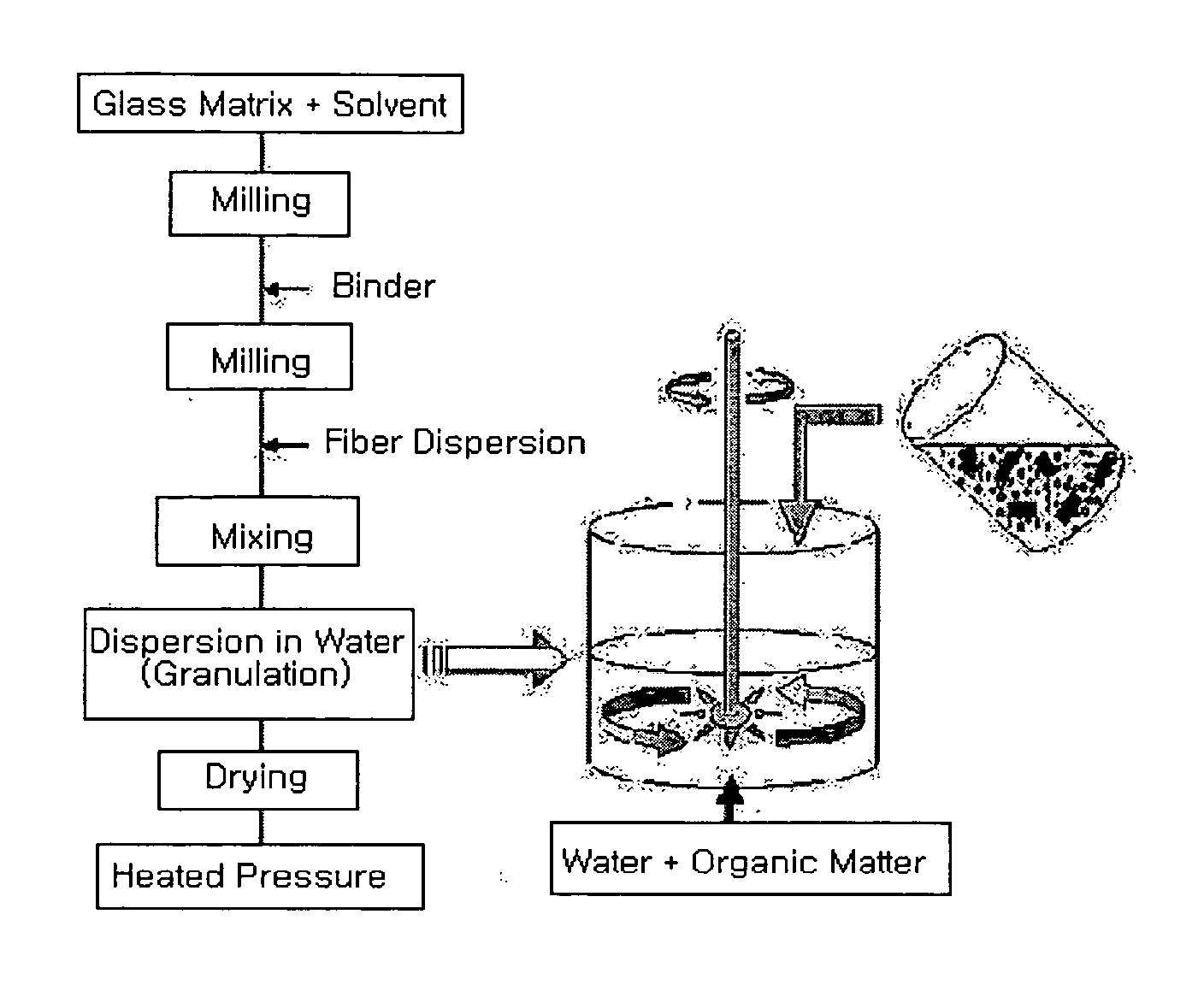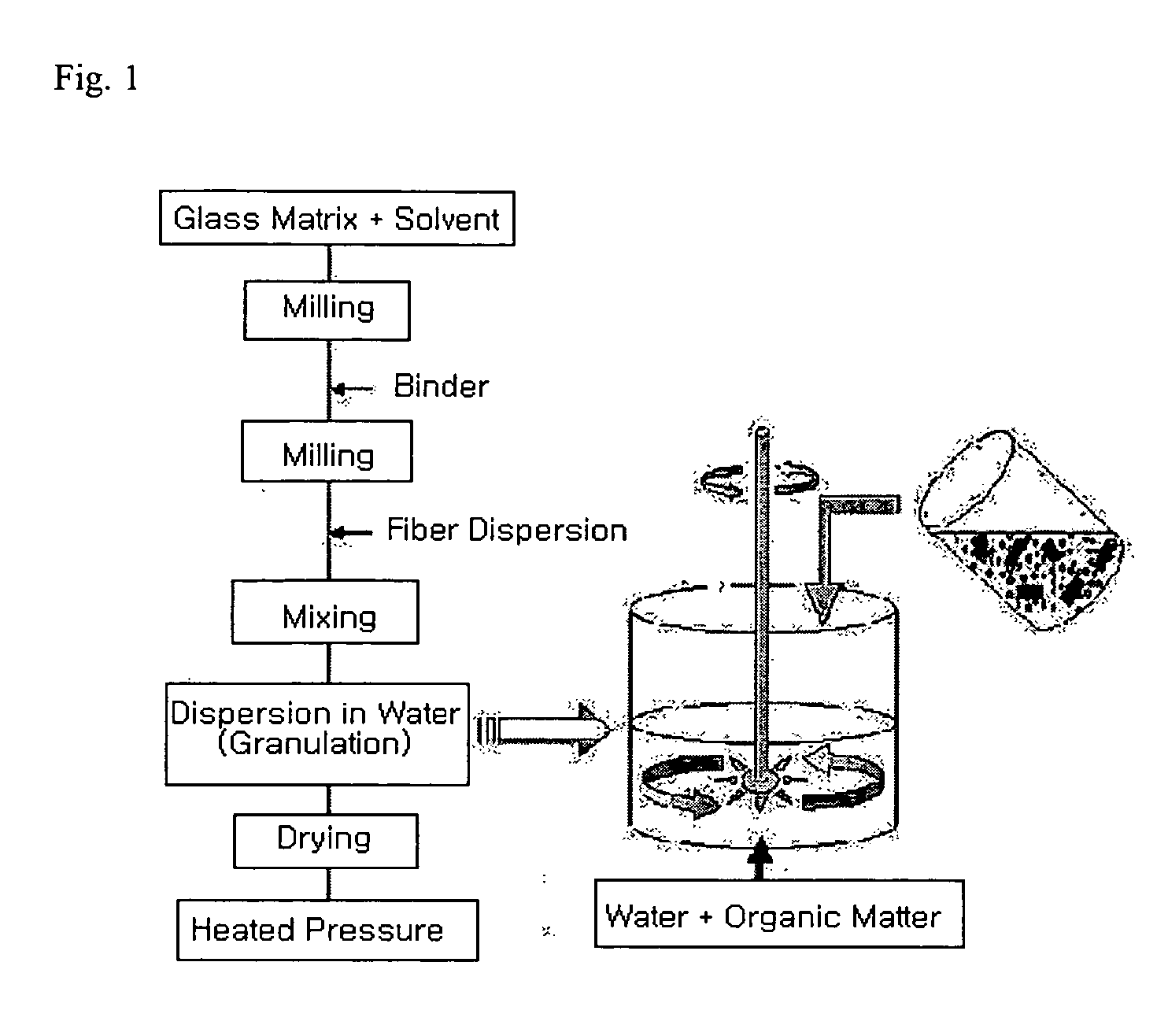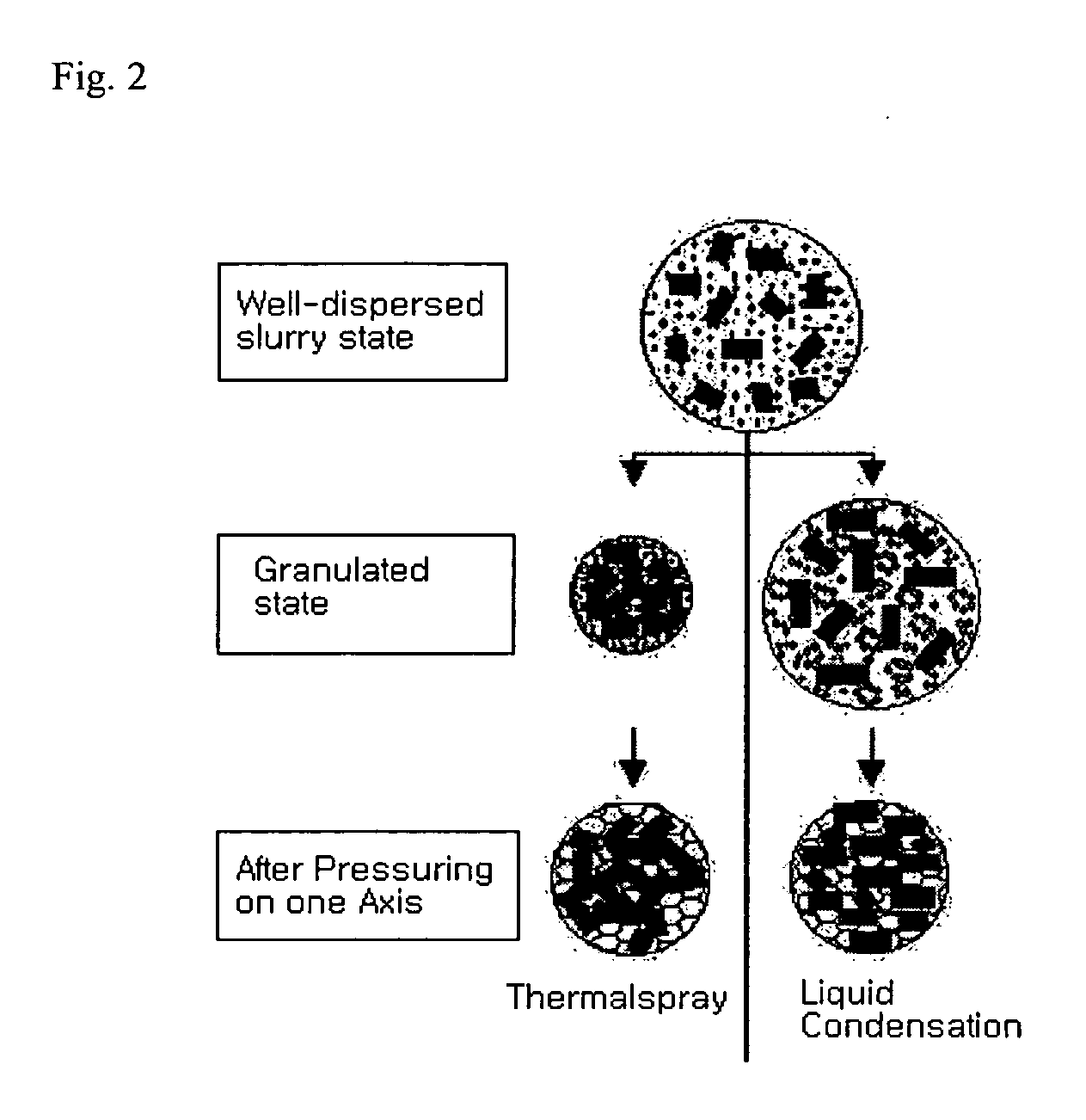Solid oxide fuel cell sealant comprising glass matrix and ceramic fiber and method of manufacturing the same
a technology of solid oxide fuel cell and glass matrix, which is applied in the manufacture of cell components, coupling device connections, and final product products, etc., can solve the problems of reducing the effective space of the end cell, and even terminating the fuel cell operation. , to achieve the effect of preventing or minimizing the viscosity flow of glass matrix
- Summary
- Abstract
- Description
- Claims
- Application Information
AI Technical Summary
Benefits of technology
Problems solved by technology
Method used
Image
Examples
examples 1-5
Manufacture of Glass Matrix for Sealant
[0049] A glass to be used as a component for preparing a glass / ceramic fiber sealant for tight sealing at high temperature by using BaO—Al2O3—SiO2 type glass (“BAS”-type glass hereinafter) was manufactured and the physical properties of thus prepared glass were analyzed. 70 g of the mixed material prepared according to the following Table 1, 35 g of isopropyl alcohol along with 20 zirconia balls with a diameter of 10 mm were added into a 100 cc polypropylene bottle and mixed homogeneously via wet process using a rotational ball mill. The mixed material was then completely dried under vacuum at 80° C. for 5 hr, remelted at 1,450° C. for 2 hr by using Siliconite or Super Kantal electric furnace, and then rapidly cooled down with distilled water to produce the primary glass. The thus prepared glass was pulverized via alumina induction to improve the homogeneity of the above primary glass, remelted at 1,450° C. for 2 hr, poured into a stainless st...
experimental example 1
Comparison of Glass to be Used for Manufacturing Sealants
[0051] The basic properties of glass were measured: softening point (Ts), glass transition temperature (Tg) and coefficient of thermal expansion (CTE) were measured by using a heat expansion coefficient measuring device (dilatimeter, DIL 402C, Netzsch). Cooled mother glass was processed by using a diamond isomer (Buehler) into the one with 5×5×10 mm and coefficients of linear thermal expansion were measured. The coefficients of linear thermal expansion of mother glass prepared according to various compositions were measured by first installing specimens to be measured along with standard specimen on a push rod, then heating them in an ambient atmosphere under pressure of 15 cN at the rate of 10° C. / min until they reach 1,000° C., thereby sensing the minute difference in thermal expansion between the standard specimen and each specimen to be measured using the push rod. The density (ρ) of each of the glass manufactured were me...
examples 5-9
Manufacture of a Gasket Using the Glass / Ceramic Fiber Sealant
[0053] The “BAS”-type glass prepared in example 3 was pulverized to the size of 1 μm by using a planetary mill (350 rpm, 20 min), a mixture comprising the resulting pulverized glass the compositions of which are shown in the following Table 4, alumina silicate fiber (Al2O3:SiO2=1:1) and 2 wt % of starch solution were mixed in a container for 30 min to form a slurry. The slurry mixture was poured into a forming mold, pressed under 150 kg / cm3 for 10 min to produce a glass / ceramic fiber gasket forming body, and then dried at 80° C. for 12 hr to manufacture a glass / ceramic fiber gasket. The shrinkage rate, apparent density, and apparent porosity of thus manufactured glass / ceramic fiber gasket were respectively measured by using distilled water based on Archimedes' Principle and the results are shown in the following Table 4.
TABLE 4GlassCeramicApparentApparent(Vol.Fiber1)ShrinkageDensityPorosityClassification%)(Vol. %)Rate (...
PUM
| Property | Measurement | Unit |
|---|---|---|
| aspect ratio | aaaaa | aaaaa |
| porosity | aaaaa | aaaaa |
| temperature | aaaaa | aaaaa |
Abstract
Description
Claims
Application Information
 Login to View More
Login to View More - R&D
- Intellectual Property
- Life Sciences
- Materials
- Tech Scout
- Unparalleled Data Quality
- Higher Quality Content
- 60% Fewer Hallucinations
Browse by: Latest US Patents, China's latest patents, Technical Efficacy Thesaurus, Application Domain, Technology Topic, Popular Technical Reports.
© 2025 PatSnap. All rights reserved.Legal|Privacy policy|Modern Slavery Act Transparency Statement|Sitemap|About US| Contact US: help@patsnap.com



